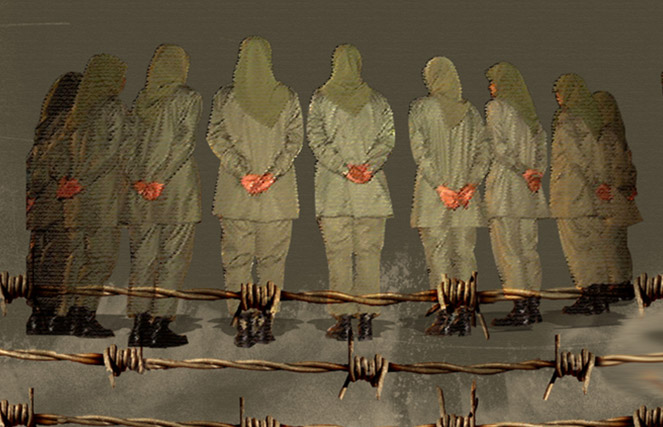Maryam Sanjabi who escaped the MEK’s notorious base, Camp Ashraf, in Iraq in 2011, recounts the stories of these women under the abusive ruling of the MEK authorities:

Nastaran Rastgarpour
She expressed her complaint against the MEK’s regulations and eventually she was faced with anger and violence. She was jailed in a corner of the camp. Nastaran was kept in a unit under the command of Giti Givechi. She was always supervised by two of the female devotees of Maryam and Massoud Rajavi. Although her family lived in Europe and she could simply move there to join them, she was not allowed to leave the group. Perhaps, she survived that horrible condition because she had secretly let her family know about her whereabouts so the group leaders did not dare to kill her.
Batul Alavi Taleghani
Batul had been deceived by the NEK recruiters together with her two sisters Azra and Maryam. Batul was so mindful that she soon realized the fraudulent trap of Rajavi. She was one of the first women who began distancing from the group’s ideology. She did not obey the cult-like regulations of the group. Due to her determination and resistance against the orders she was kept in a small room of the units. Whenever this brave woman was imposed too much pressure, she started shouting insults to Massoud and Maryam Rajavi.
Batul Alavi Taleghani endured too much sufferings under the Cult of Rajavi that she finally fell sick and passed away. The leaders of the cult never let her out of that room. For more humiliation, they had made her sister, Maryam, to guard Batul. She needed specialized medical care but the group’s doctor, Javad Ahmadi just injected her strong sedative drugs . She was also given weird medications until she died.
Asefeh Jaafarzadeh
She was a young girl whose Mujahed parents had taken her to Iraq when she was a child. Asefeh was a smart girl. She soon started protesting. She wanted to leave Iraq and to have a free life. Under the order of the Rajavis, she was not allowed to leave.
However, Asefeh did not stop complaining. Eventually she was moved to a unit called “departure” but she was jailed there. She was kept for almost a decade.
The group leaders promised her to give her documents to her in order to take refuge in a third country but they never did. A woman, named Marzieh Ghaffari was her guardian.
Maryam Torabi
She was also a prisoner in the MEK cult. Mayam and her siblings Masoomeh and GhorbanAli Torabi joined the group in 1987. They naively thought that their dream to join a freedom fighting group had come true. Soon the Torabis were suspected as traitors by the commanders. They were jailed, interrogated and tortured by the group commanders in 1994. At the time about 500 members of the group were imprisoned under the accusation of being agents of the Iranian government. All of them were mentally and physically tortured and at least two people died.
Maryam was in solitary confinement for several months. She was under too much pressure. Her brother, GhorbanAli was killed under torture. Her brother’s murder was a trauma that drove Maryam mentally ill. The poor girl was kept under a humiliating situation in a unit in Camp Ashraf. The cult leaders even made her sister Masoomeh to verbally abuse her.
Maryam was under the most horrific mental pressure until the day I was in Camp Ashraf. The cult leader had no pity for her. They always discredited her before other women.
Saeedeh Keyhani
She was an educated girl who had graduated from a university in the United States. She had been transferred from the US to Iraq in the early 2000s. She could speak English well. She worked as translator for the MEK. However, the group leaders were vigilant about her. They knew that those members who had come from the US or Europe would soon want to get back there and if they left the group, they would never get back.
Shortly, Saeedeh stood up to protest against the MEK leaders. She did not let them coerce her but she had a distressing fate just like every other dissident inside the group. She was constantly under mental pressure. She was often insulted and humiliated in self-criticism meetings. She was always under severe control.
